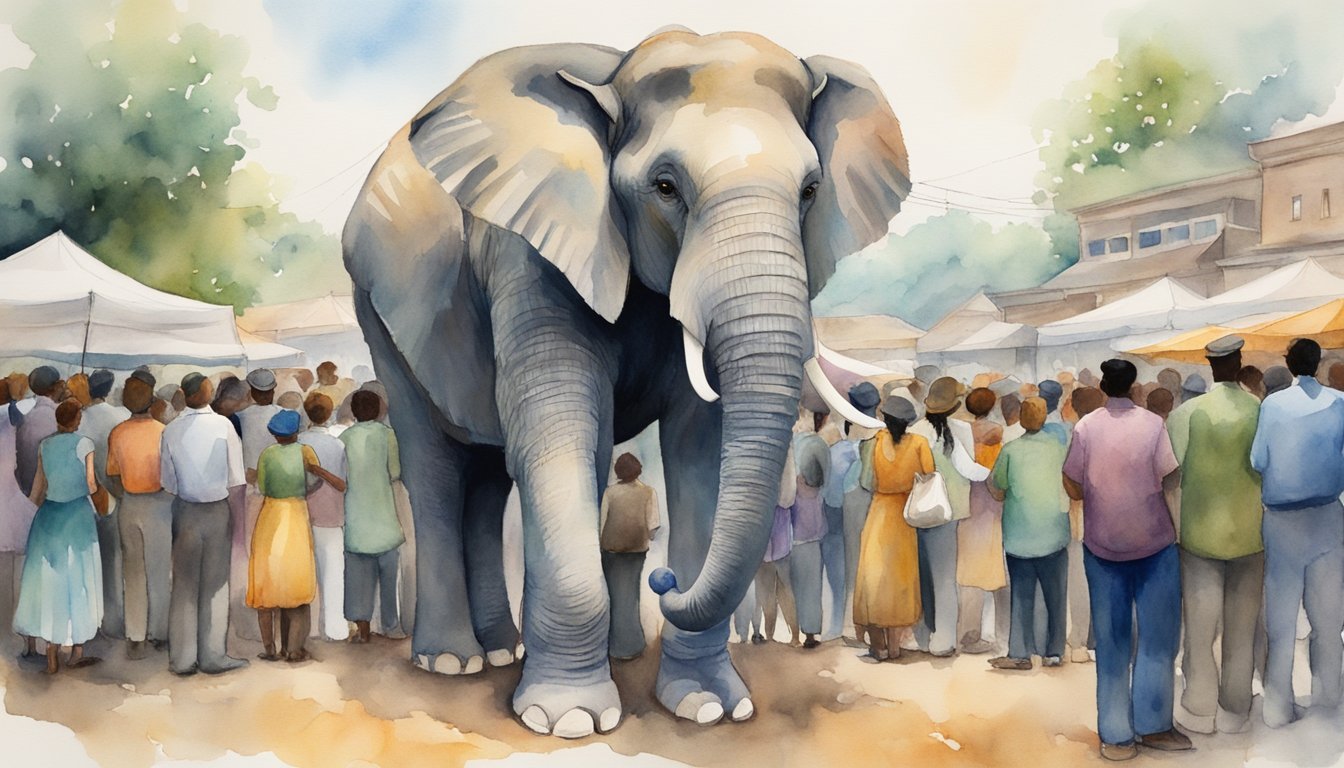The Life of Topsy the Elephant
Topsy was an Asian elephant born in Southeast Asia, estimated around 1875. At a young age, she entered the United States and was incorporated into the lineup of performing elephants by the Forepaugh Circus. This circus was fiercely competitive with P. T. Barnum’s circus enterprise, featuring many wild animals.
Over time Topsy gained a reputation. Difficult incidents involving the elephant led to discourses on animal treatment and the nascent involvement of groups like the American Society for the Prevention of Cruelty to Animals (ASPCA). Throughout her life, Topsy was associated with several acts of resistance that were often reflective of the abuse exerted by her handlers.
Topsy’s journey eventually took her from the circus to Luna Park in Coney Island. There, her life concluded in a highly controversial public event which gained significant attention and underscored the need for change in how animals were treated in entertainment settings. Topsy’s story is a poignant chapter in the historical narrative surrounding circus elephants and the shifting American perspectives on animal rights and welfare.
The Final Events and Legacy

The turn of the 20th century witnessed a tragic culmination of events involving Topsy the Elephant that left an indelible mark on history—a convergence of animal mistreatment, a technological rivalry, and a shift in public opinion about animal entertainment.
Culmination of the War of Currents
The death of Topsy the Elephant occurred against the backdrop of a fierce industrial feud known as the War of Currents. This was a period where Thomas Edison and Nikola Tesla competed over their respective electrical systems, Direct Current (DC) and Alternating Current (AC). Edison, who had his hopes pinned on DC, sought ways to discredit AC, which was backed by his opponent George Westinghouse.
The Execution of Topsy
In a deplorable attempt to demonstrate the dangers of alternating current, Topsy was put to death in a spectacle of electricity. The execution method involved poisonous carrots laced with potassium cyanide, followed by electrocution. On January 4, 1903, in front of a crowd of spectators at Coney Island, New York, this tragic event took place—an event that encapsulated the era’s callous attitude toward animals.
Documenting Topsy’s Fate
The execution of Topsy holds the gruesome distinction of being one of the early atrocities captured on film. Edison’s film company was present that day and produced a short film titled “Electrocuting an Elephant.” The film, which documents Topsy’s death, is still referenced today and remains a testament to the darker aspects of early motion picture history.
Reflection and Remembrance
Over time, Topsy’s story evolved from a public execution spectacle to a sobering lesson in animal rights and ethics. Institutions such as the Library of Congress and Coney Island USA Museum have archived records and artifacts related to Topsy’s death, facilitating reflection and discussion. Her story serves as a harsh reminder of past cruelties and has helped to shift public opinion towards more humane treatment of animals used as attractions.

